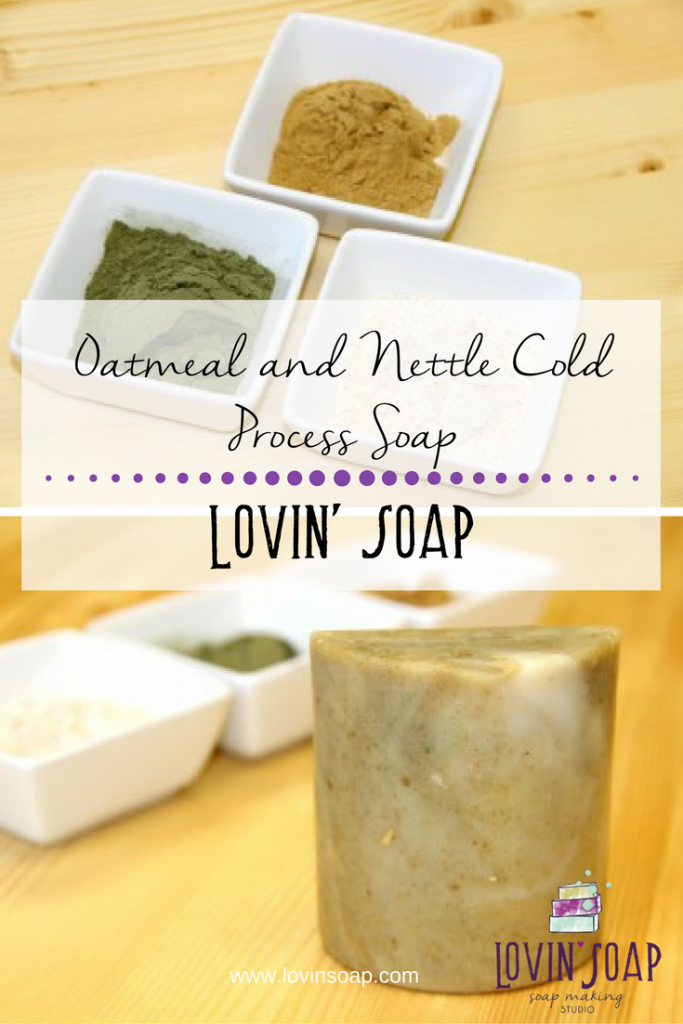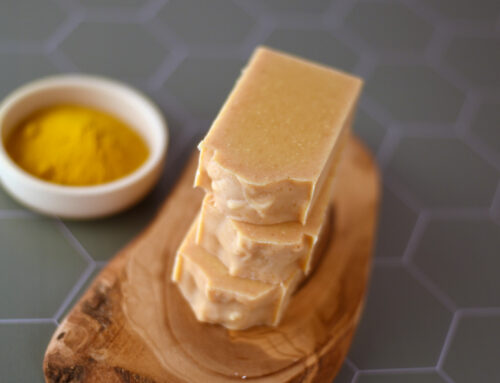Donna Maria recently issued a challenge to Indie Business members to blog for 30 days! I couldn’t participate just then, but I knew I could for the month of July. For every day in July, I will be posting a recipe! I already have 16 different cold process soap recipes ready to go and will finish 14 more for the second half of the month.
These recipes feature natural colorants and additives and are scented using natural essential oil blends. They will all fit into a 10″ silicone loaf mold (affiliate link http://www.brambleberry.com/10-Silicone-Loaf-Mold–P5199.aspx?bb=5) from Bramble Berry. So let’s get started!
Featured Ingredients:
Oatmeal – Oatmeal is great for the skin! It is soothing, nourishing and slightly exfoliating. I like to take regular oats (not instant) and pulverize them in a coffee grinder. Whole oats can be a bit scratchy on the skin.
Nettle Powder – Nettle has been used for centuries to alleviate skin issues from eczema to acne and everything in between. It has astringent and anti-inflammatory properties.
Chamomile Powder – Chamomile is second to lavender when it comes to herbs for natural skincare products. Chamomile has antiseptic, anti-oxidant and anti-inflammatory properties.
Oatmeal and Nettle Cold Process Soap Recipe
Coconut oil – 10 oz.
Shea butter – 4 oz.
Olive oil – 12 oz.
Rice bran oil – 2 oz.
Avocado oil – 2 oz.
Neem oil – 2 oz.
Lye – 4.5 oz.
Water – 9 oz.
Additives:
Chamomile Powder – 1 teaspoon
Oatmeal Powder – 2 teaspoon
Nettle Powder – 1 teaspoon
Essential Oil Blend:
Lavender Essential Oil – 45 grams
Clary Sage Essential Oil – 5 grams
Chamomile Essential Oil – 10 grams
Basic Soapmaking Process:
New to soapmaking? Visit our basic tutorial here.
Step 1 – Wearing safety gear, weigh out the lye and water into two separate containers.
Step 2 – Pour the lye into the water while stirring. Place in a safe place and let cool while you prepare the oils.
Step 3 – Weigh out the hard oils/butters and melt.
Step 4 – Weigh the liquid oils into the melted oils/butters. This helps cool the oils down.
Step 5 – Add essential oils and additives to the melted oils. Stick-blend to get rid of clumps if any occur.
Step 6 – Once both the lye solution and oils have cooled to under 100° F, add the lye solution to the oils and mix to trace. Be sure to wear goggles and gloves!
Step 7 – Pour the soap into your mold.
Step 8 – Unmold, cut and cure your soap for at least four weeks.
Happy Soaping!
Amanda Gail
pssssst – Do you want more cold process soap recipes featuring natural additives and essential oil blends? Check out Lovin’ Soap Studio Cold Process Soap Recipe Book! This recipe book contains 50 recipes for cold process soap and 64 essential oil blends. You can get it as a PDF eBook here or a printed book here.
Are you looking for soapmaking, nail polish and other body care product classes in the Kansas City area? Check out our schedule. Our studio is in Downtown Lee’s Summit, MO.










Haven’t used neem oil in a soap yet, but have use for other things.
Does the smell carry into the cured soap?
Thanks!
Are you using nettle leaf or nettle root powder?
It looks like nettle leaf, nettle root would most likely be brown or a light tan color.